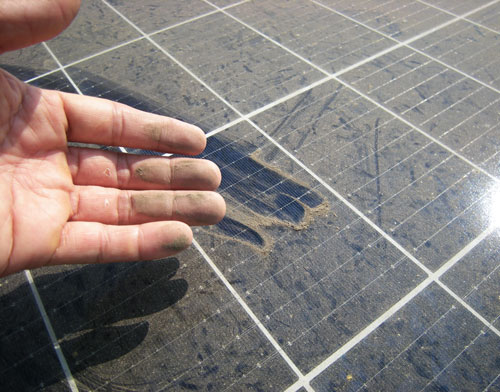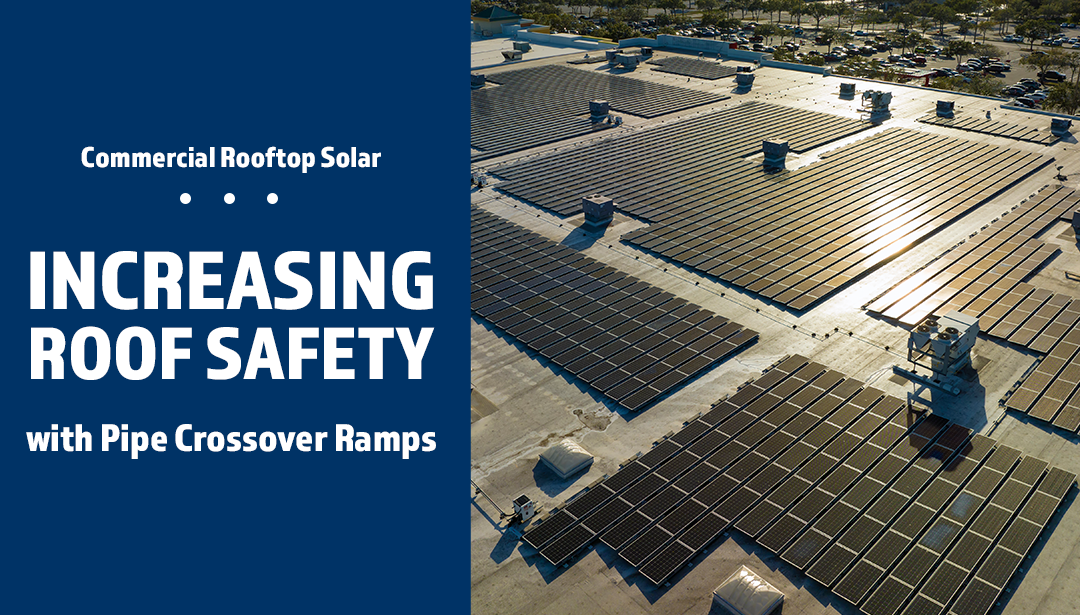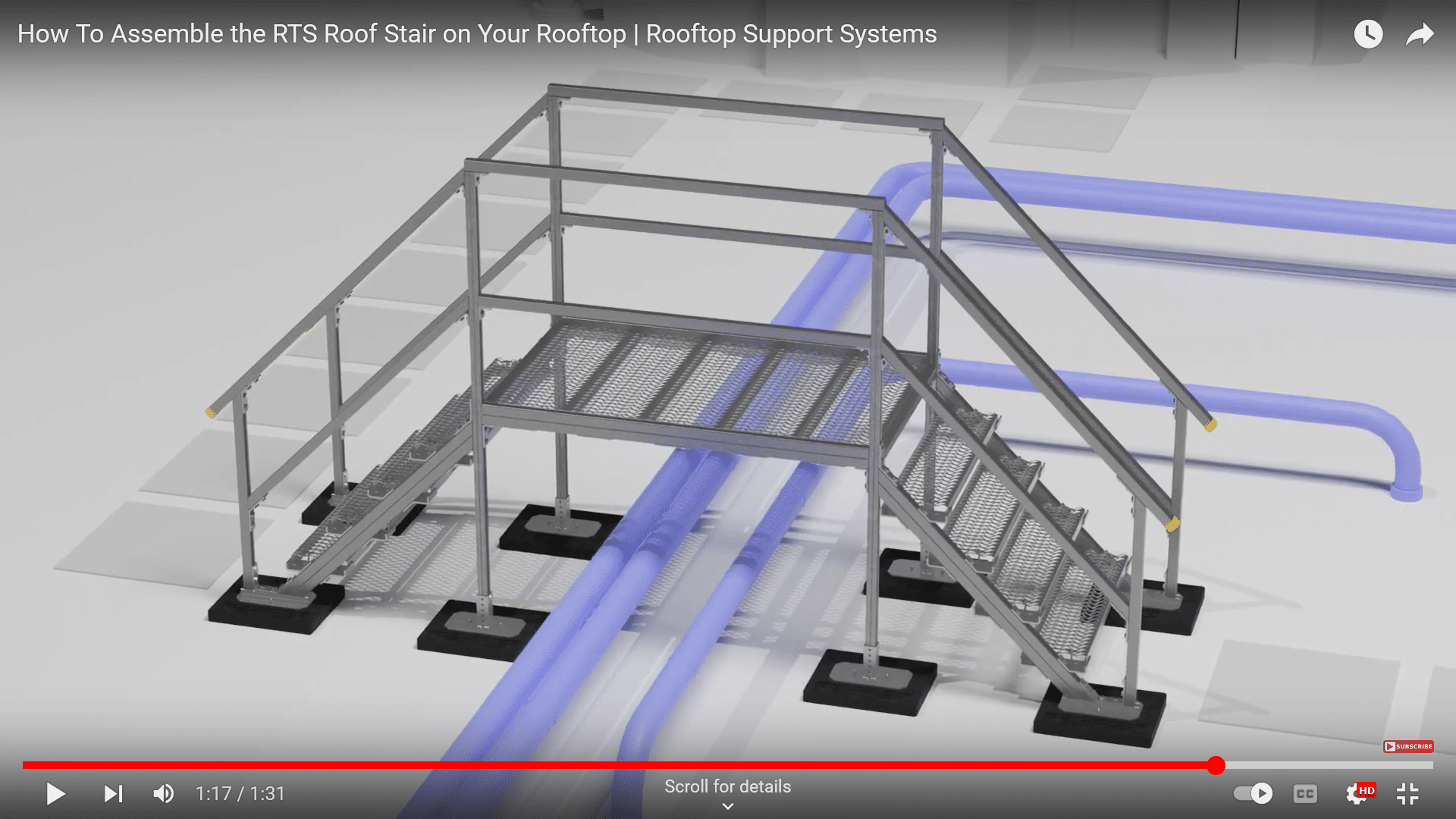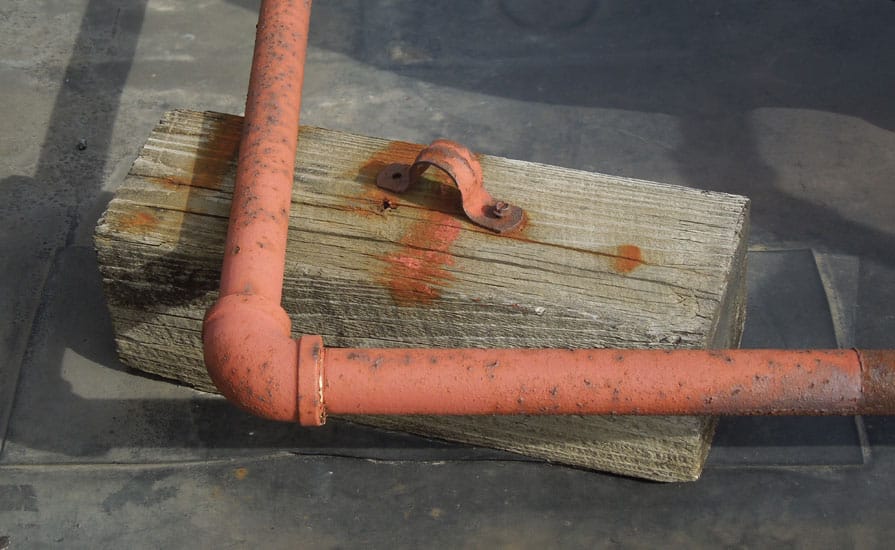Ensuring roof safety becomes an increasingly important concern, as the adoption of commercial rooftop solar installations continues to grow. These installations involve large arrays of solar panels, complex electrical systems, and various rooftop utilities that can create potential hazards for maintenance personnel. The presence of solar conduit, solar inverters, and other components needed to support rooftop solar systems further complicates the environment. Without proper planning and safety measures, these elements can lead to safety risks, making it crucial to implement effective solutions for traversing rooftop obstacles.
Creating safe pathways around solar arrays is vital for protecting workers and maintaining system efficiency. Rooftop solar installations typically require regular maintenance, and the layout of the solar panels and conduit must be carefully managed to ensure safe access. In this blog, we will explore the challenges associated with rooftop safety in commercial solar installations and discuss practical solutions that can improve both safety and functionality.
Do Solar Panels Need Cleaning?

Yes, solar panels need to be cleaned regularly to maintain their efficiency. Over time, dirt, dust, pollen, bird droppings, and other environmental debris can accumulate on the surface of the panels. This buildup blocks sunlight from reaching the photovoltaic cells, reducing the panels’ ability to convert solar energy into electricity. In commercial rooftop solar installations, where maximum energy generation is critical to the operation’s success, even a slight drop in efficiency due to dirty panels can have significant consequences.
Cleaning solar panels ensures that they operate at peak performance. It’s important to use non-abrasive cleaning materials and techniques to avoid damaging the panels. In some cases, professional cleaning services are recommended to ensure the job is done properly. Regular maintenance of the panels also includes inspecting them for damage, loose wiring, or other issues that could impact performance or safety.
Roof Safety Tip: How Often Should Solar Panels Be Cleaned?

The frequency with which solar panels should be cleaned depends on several factors, including the location of the installation, weather conditions, and the amount of debris in the area. For instance, in regions with high dust levels or pollution, such as industrial zones or areas near highways, solar panels may need to be cleaned more frequently. Generally, it is recommended to clean commercial rooftop solar panels at least twice a year to maintain optimal efficiency.
However, this frequency can vary depending on the specific environmental conditions. In areas with heavy bird activity or near agricultural operations, panels may need more frequent cleaning to remove bird droppings and other organic materials. Regular inspections should be part of a maintenance routine, allowing building owners and maintenance personnel to monitor when the panels require cleaning. In many cases, automated systems that monitor panel performance can help identify when cleaning is necessary by detecting drops in energy output.
Where Does the Electrical Conduit for Solar Panels Go?

Electrical conduit is used to house and protect the electrical wiring that connects the solar panels to the inverter and other system components. In addition to protecting the wiring from the elements, the conduit also helps organize all of the wires into a singular system, minimizing the number of rooftop obstacles. This solar conduit typically runs along the rooftop, raised above it on roof pipe supports.
In commercial rooftop solar installations, the layout of the conduit is carefully planned to minimize interference with the solar panels and to ensure ease of access for maintenance personnel. Conduit is often installed along the edges of the rooftop, to prevent it from becoming a tripping hazard. However, in large rooftop solar arrays, not all arrays may be near to the edge of the roof. In these instances, it becomes necessary to find a solution that allows workers to navigate safely around or over the top of the solar conduit.
Our Challenge: How to “Hide” Solar Conduit
For a recent project, we faced the challenge of providing a safe way to manage solar conduit on a commercial rooftop solar installation. Our client, a leading Texas-based developer of commercial and industrial solar solutions, required a roof safety solution for one of their projects involving a major supermarket chain in their local region. The goal was to provide pathways over or around solar conduit and other obstacles, for maintenance personnel to work on the solar arrays and other rooftop equipment safely.
The flat commercial rooftops were large and contained multiple groupings of solar panels, associated solar conduit, cable trays, and other essential components. We needed a solution to protect the workers and the supply of energy from the solar panels to the inverter, minimizing the chance of an accidental solar power failure.
This required us to evaluate the layout of the rooftop, the height and span of the conduit, and the specific locations where safe crossings were necessary. The challenge was not only to protect the workers from tripping hazards, but also to ensure that the possibility of compromised wiring from fall related accidents could not create additional hazards for those working on the roof.

Our Roof Safety Solution: Pipe Crossover Ramps
To solve this issue, we designed customized pipe crossover ramps, placed at key areas throughout the rooftops, that would provide safe passage over the solar conduit and other rooftop obstacles. These crossover ramps, sometimes referred to as pipe crossovers, access ramps or crossover bridges, allowed maintenance personnel to move freely across the rooftop without disrupting the conduit or being exposed to unnecessary safety risks.
After carefully evaluating all of the data provided by the customer from multiple grocery store and distribution center locations, we were able to design a total of 43 custom crossover ramps. The project spanned two separate sales orders, each tailored to the specific needs of the site. By providing clear pathways over the conduit and other obstacles, we ensured that maintenance crews could perform their tasks safely and efficiently. The crossover ramps were designed to withstand the harsh rooftop environment while maintaining their structural integrity and functionality for years to come.

More About RTS Crossover Ramps
RTS Crossover Ramps are an essential component of creating an effective plan for safely navigating rooftop environments with multiple obstacles. These pipe crossovers are designed to provide clear passage over solar conduit, piping, HVAC lines, and other utilities commonly found on commercial rooftops. Made from durable, weather-resistant materials, RTS Crossover Ramps can withstand the harsh conditions typically encountered in outdoor settings, such as extreme temperatures, UV exposure, and moisture.
Available in a variety of configurations, RTS Crossover Ramps can be customized to meet the specific needs of your project. They are easy to install, with modular components that allow for rapid assembly using only common, simple hand tools. Key benefits of RTS Crossover Ramps include improved safety, compliance with OSHA regulations, and the ability to protect both personnel and equipment from potential damage.
For more detailed information on these products, including product materials, standard dimensions, product submittals, drawings, and installation instruction, you can explore our Crossover Ramp Product Page.
More About Rooftop Support Systems
Rooftop Support Systems (RTS) is dedicated to providing innovative solutions for improving rooftop safety and efficiency. With a wide range of products designed for commercial and industrial applications, RTS specializes in rooftop support systems that are tailored to the unique needs of each project. From pipe crossover ramps to support structures for HVAC units and solar arrays, RTS offers comprehensive solutions that prioritize safety, compliance, and durability.
Our team works closely with clients to understand their specific requirements and provide customized support systems that meet the demands of their rooftop environment. With a commitment to quality and customer service, RTS ensures that every project is completed to the highest roof safety standards.
Ready to Get Started with us on your next Rooftop Project?

1 (888) 243-2669




